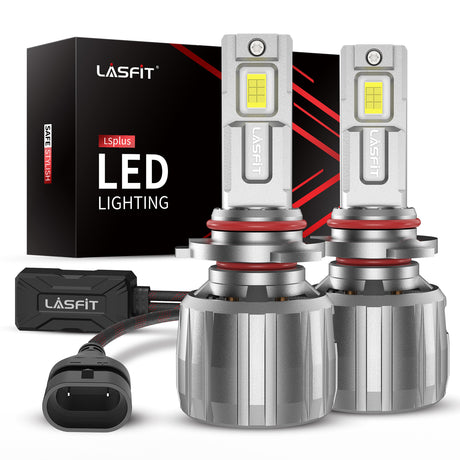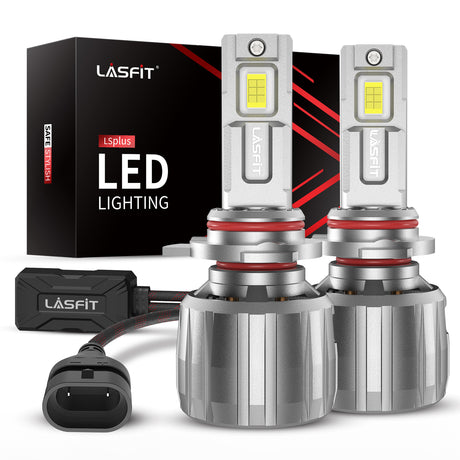Summer storms, sudden downpours, foggy windshields — rainy night driving can turn a familiar road into a dangerous challenge. Many drivers feel anxious behind the wheel when visibility drops, headlights seem weak, and the road ahead disappears into the darkness. Whether you're commuting, road-tripping, or just heading home, having the right lighting and safety habits can make all the difference.
In this guide, we’ll break down everything you need to know about staying safe during rainy day driving — from understanding the risks, checking your current lighting setup, upgrading your bulbs, to expert safety tips and real-world product recommendations.
🌩️ Why Rainy Night Driving Is More Dangerous Than You Think
Rainstorms are one of the leading causes of nighttime accidents — and it’s not hard to understand why. On a rainy night:
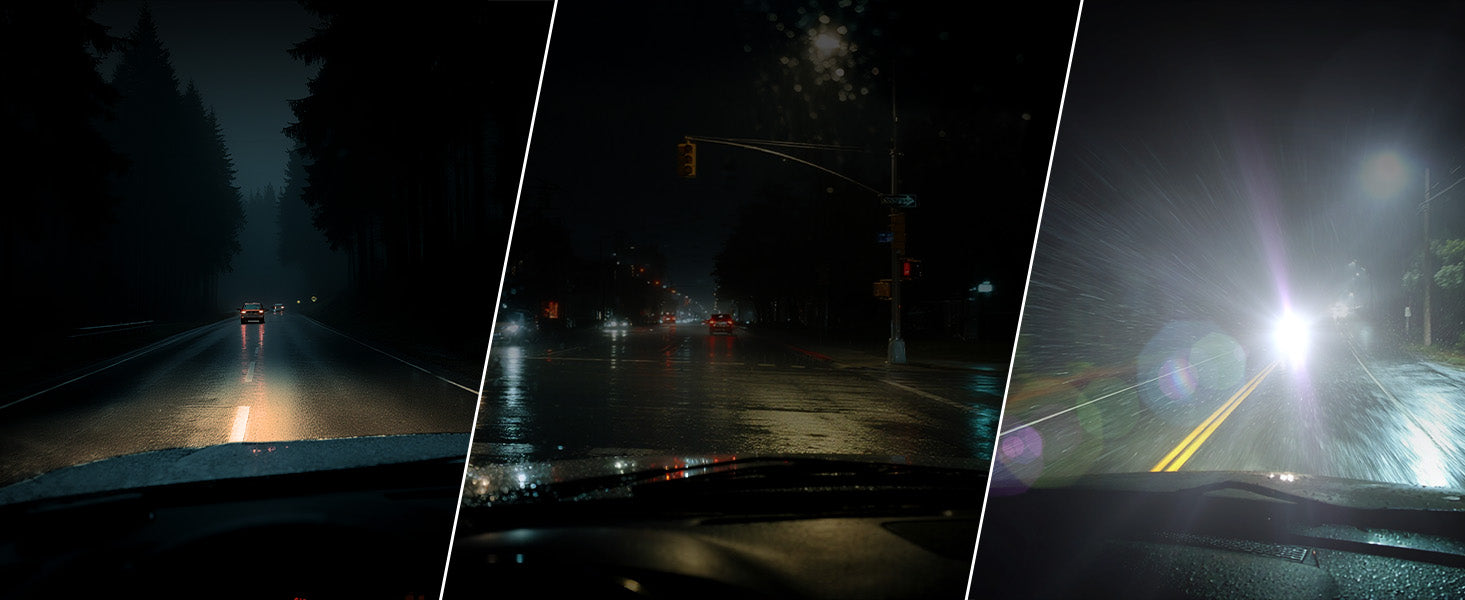
- Water on the windshield and road surface scatters light, reducing visibility
- Glare from oncoming vehicles becomes more intense
- Lane markings and signs become harder to see
- Reaction times slow down due to poor visual cues
💡 The Critical Role of Lighting in Rainy Night Safety
When it comes to safe night driving in the rain, your headlights aren’t just a legal requirement — they’re a lifeline.
What Makes a Good Rainy Night Visibility?
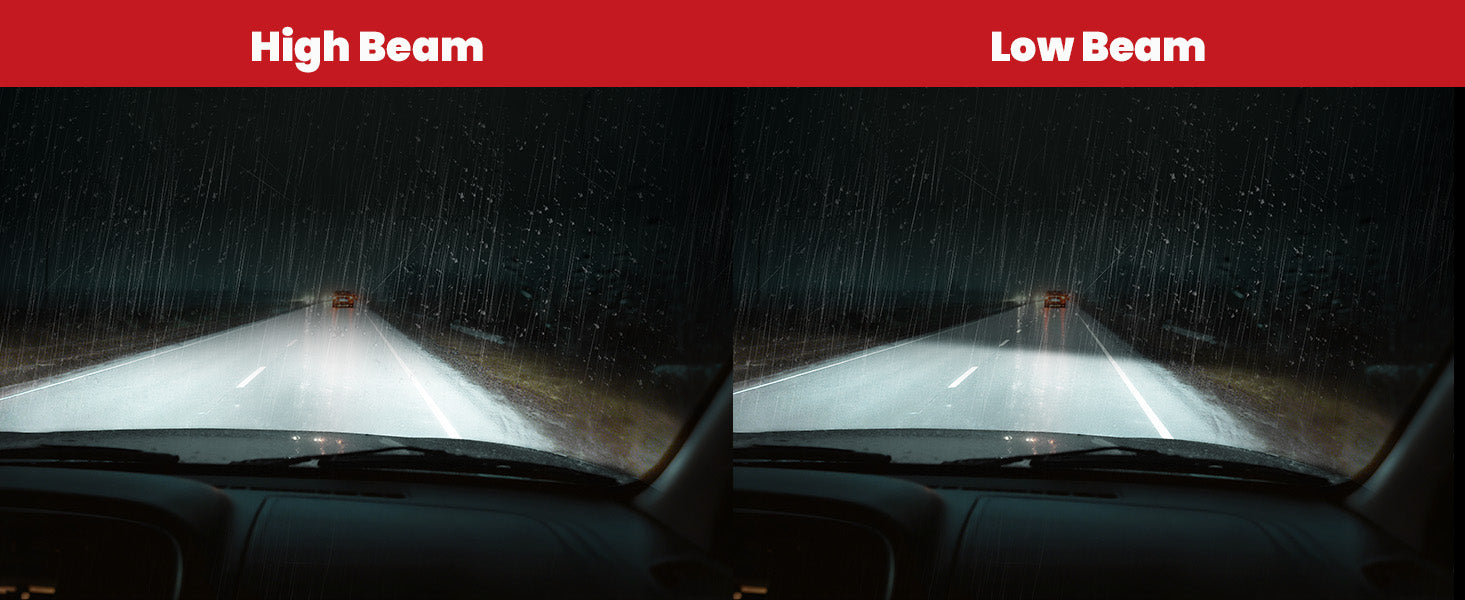
- Longer Throw Distance: So you can spot hazards earlier
- Wide Beam Spread: To clearly see both sides of the road and lane lines
- Color Temperature Between 5500K–6000K: Pure white light offers better contrast on wet roads than yellow halogen light
- Sharp, Focused Cutoff: Prevents glare and enhances visibility without blinding other drivers
How to Choose the Right Headlight Bulbs for Rainy Nights
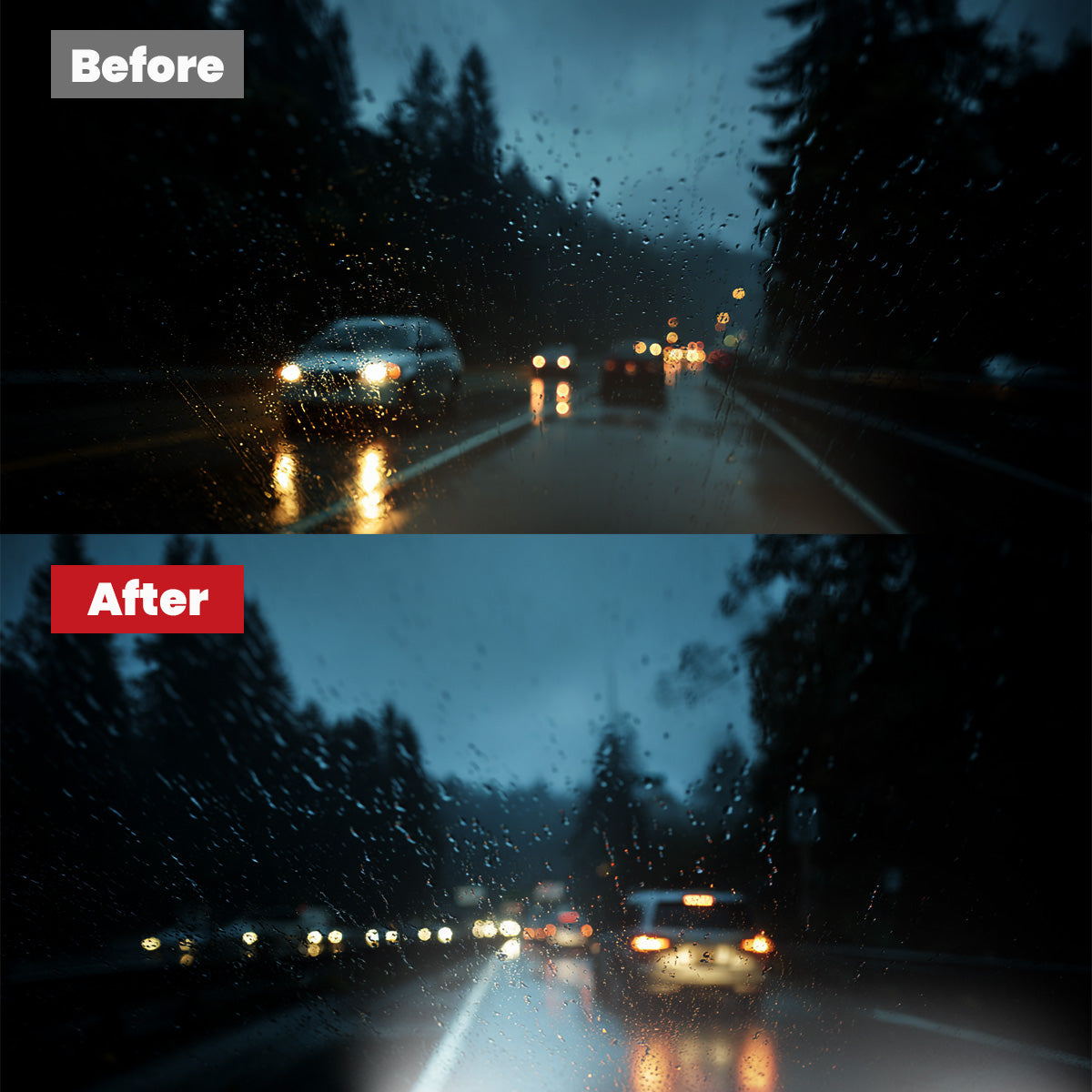
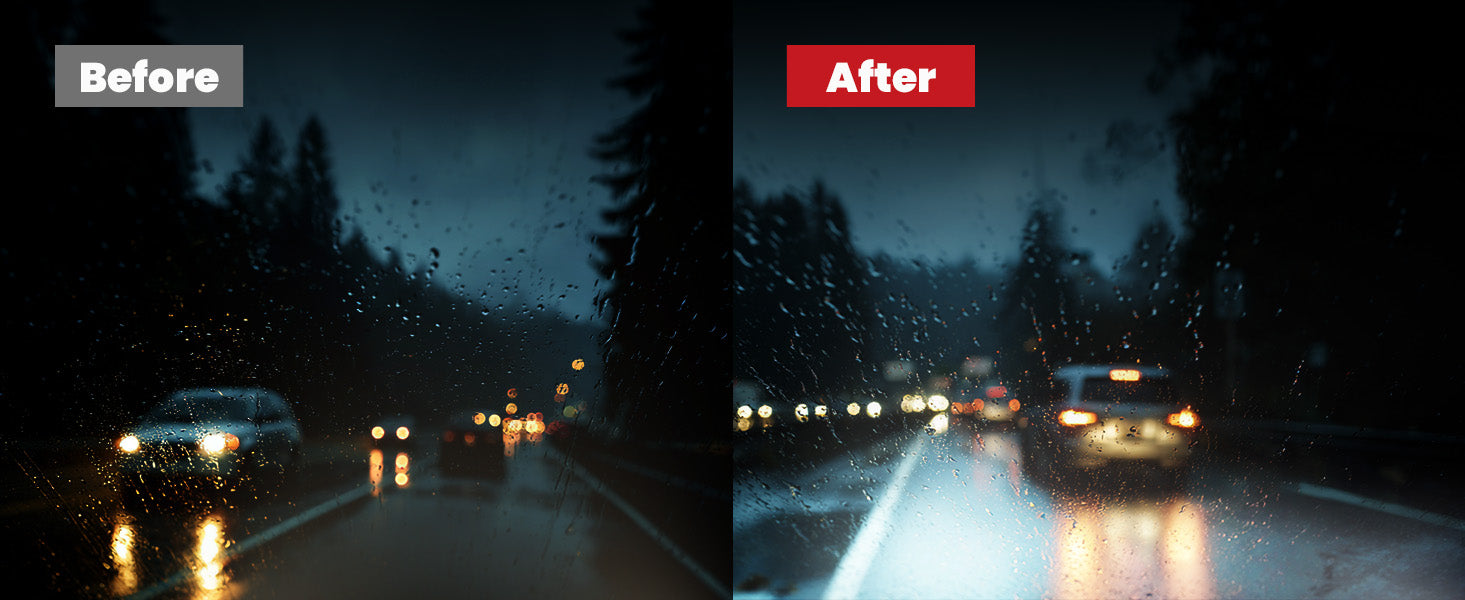
Upgrading your bulbs can drastically improve safety — but not all LED bulbs are created equal. Here are the key features to look for:
-
✔️ 1. Correct Color Temperature
5500K–6000K is ideal for rainy nights.
Too blue (>6500K) reflects off wet roads and reduces visibility. -
✔️ 2. Strong Beam Focus
Look for bulbs with precise beam patterns that mimic OEM halogen design.
Avoid scattered light that causes glare. -
✔️ 3. Penetration Power
Brightness matters, but useful brightness (actual light on the road) matters more. -
✔️ 4. Waterproof & Durability
Minimum IP67 waterproof rating.
Rain = heat + humidity + electrical exposure — don’t settle for cheap builds.
🔦 Recommended Solution: Lasfit LS Plus LED Bulbs
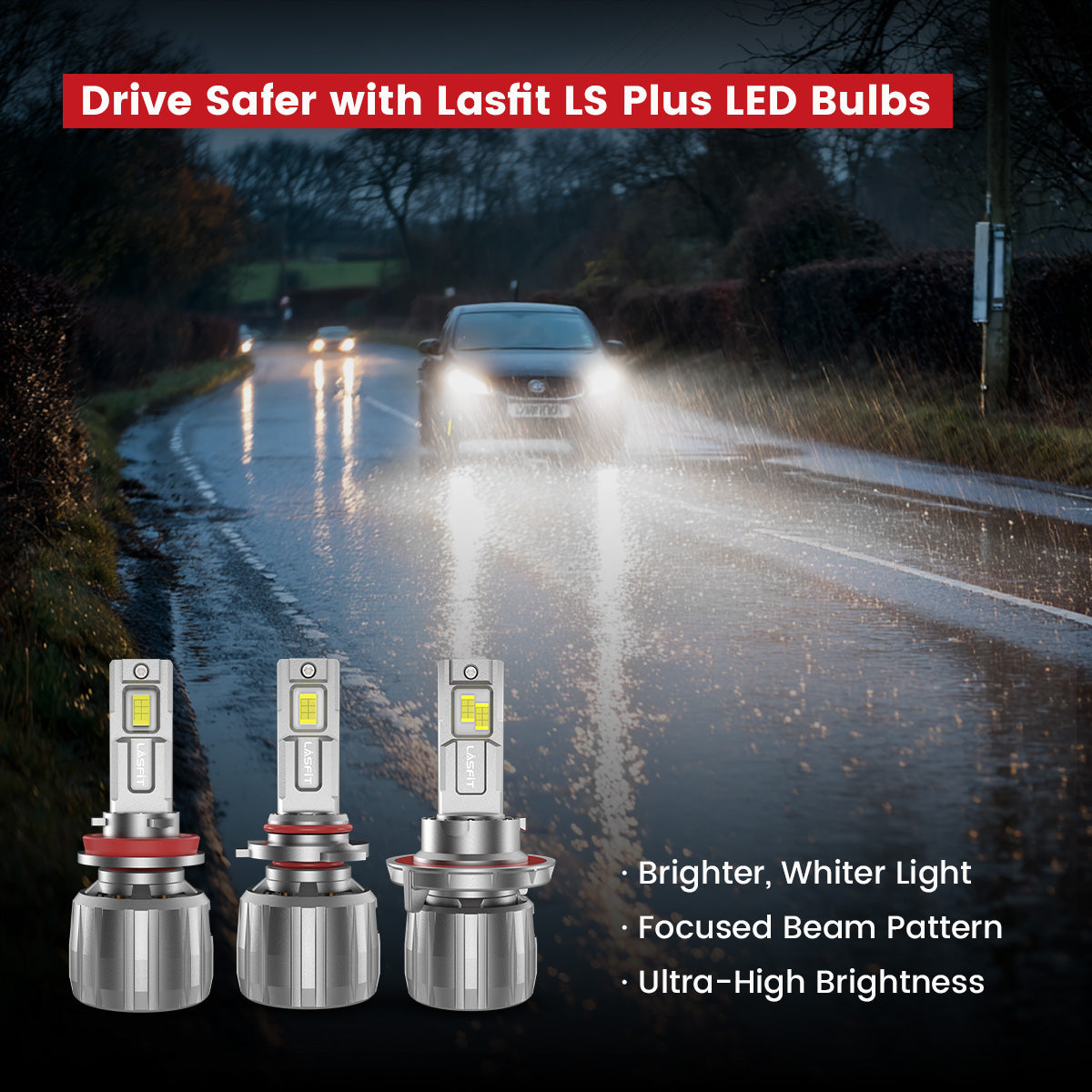
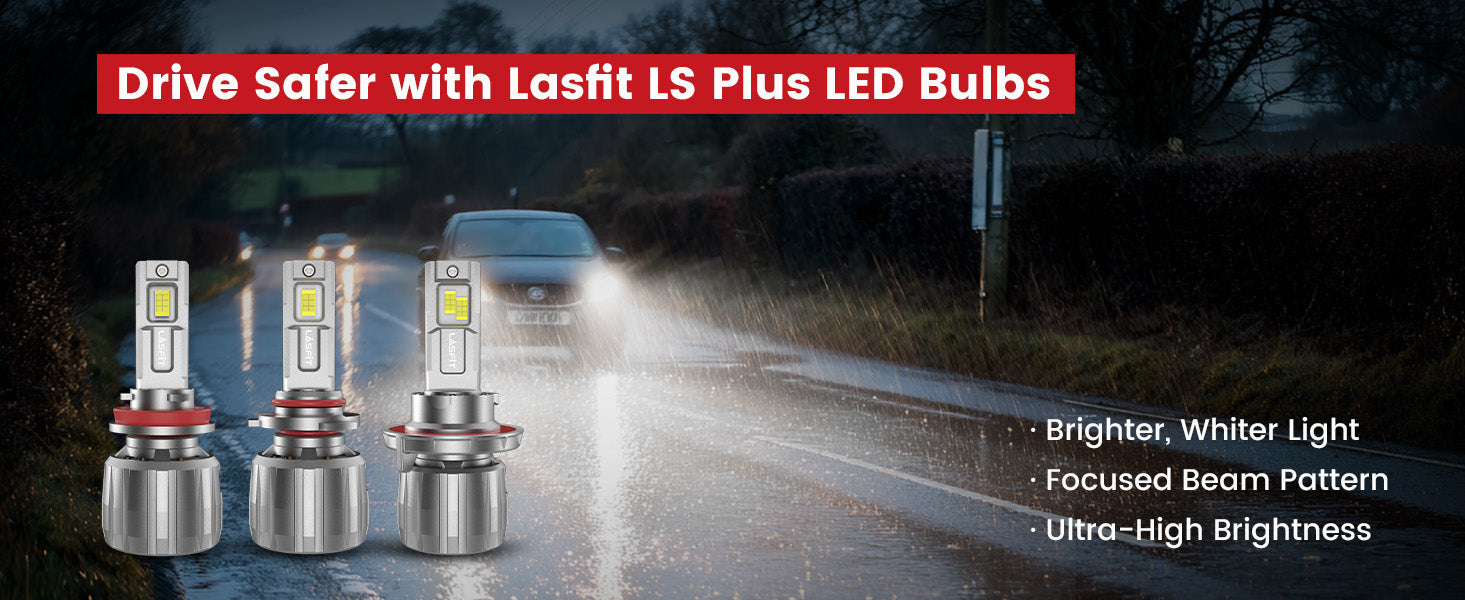
Lasfit’s LS Plus Series is specifically engineered for extreme conditions like rainy nights.
Why Lasfit LS Plus led bulbs stands out:
- 💡 Up to 700% brighter than halogens with a 6000K cool white beam
- 🎯 Ultra-precise beam pattern – no glare, no scattered light
- 💧 IP67 waterproof and external driver design for better heat management
- 🛠️ Easy plug-and-play install with no need for extra resistors
- ✅ Perfect for both headlight bulbs and fog lights
🚗 Extra Rainy Night Driving Safety Tips
Even with top-tier lighting, rainy nights demand cautious driving habits. Here are additional tips to stay safe:
- Increase Following Distance: Give yourself more time to brake
- Slow Down: Wet roads can double your stopping distance
- Use Fog Lights Wisely: In heavy rain or fog, low-mounted fog lights improve near-field visibility
- Defog Your Windshield: Use your AC and defrost mode to keep glass clear
- Check Your Tires: Tread depth and inflation affect grip in the rain
- Avoid Sudden Steering or Braking: Smooth inputs prevent hydroplaning
🛠️ Final Thoughts: Upgrade Before the Next Storm Hits
Rainy night driving doesn’t have to be stressful or unsafe. By upgrading to bright LED bulbs like the Lasfit LS Plus, and following essential safety practices, you can enjoy clear vision, faster reaction time, and peace of mind — no matter how bad the weather gets.
Don't wait for another scary stormy drive. Make the switch now and drive with confidence.



